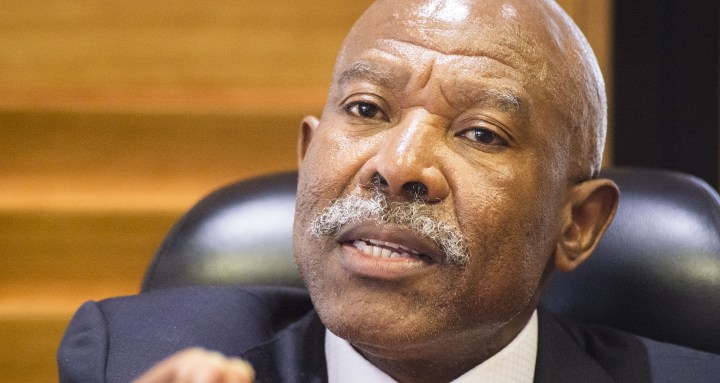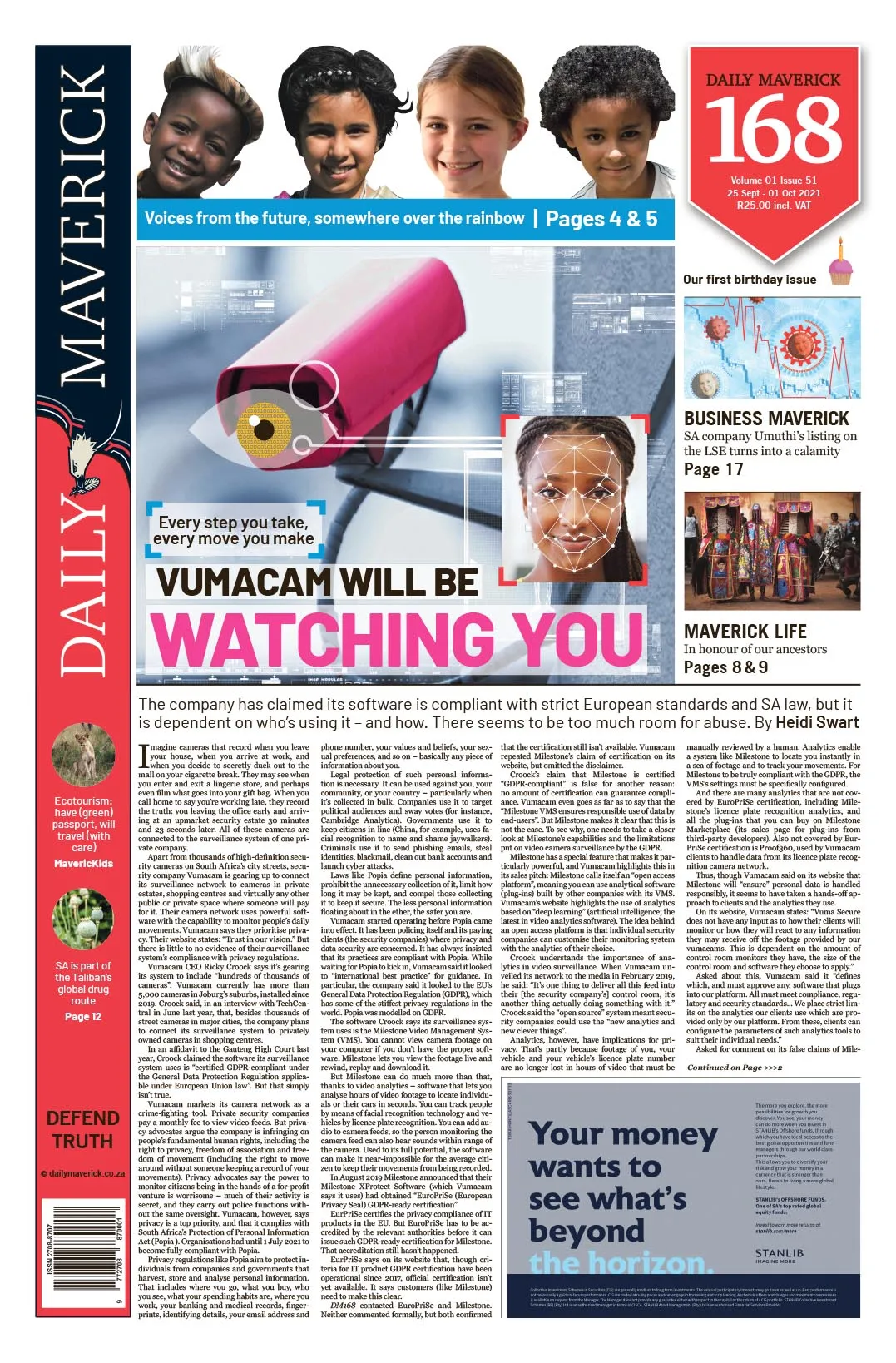BUSINESS MAVERICK 168
Reserve Bank’s decision to hold interest rates steady is good news for South Africa’s economy

SA Reserve Bank will not be raising interest rates for now, and it is likely to hold off on hikes for as long as possible in an effort to support economic growth.
First published in the Daily Maverick 168 weekly newspaper.
The South African Reserve Bank (Sarb) kept benchmark lending rates unchanged at 3.5% on Thursday, 23 September for a sixth meeting in a row, as markets had expected, saying that while consumer inflation would likely remain contained in the medium term, risks to the economic recovery, particularly the violent riots in July, needed to be watched closely.
The decision by the Monetary Policy Committee (MPC) was unanimous, and its statement struck a balanced tone, slightly less hawkish than the Quarterly Projection Model (QPM) – the econometric tool the bank uses to generate macroeconomic forecasts and chart the future direction of repo rates.
The model suggests a 25 basis points (bps) increase to lending rates at the MPC’s November meeting, and increases by the same amount in each quarter of 2022 and 2023, a total of 225 basis points.
That would take the repo rate to 7.75%, more than 1% higher than where it was before March 2020 when the bank kicked off the series of rate cuts in response to the pandemic.
Sarb Governor Lesetja Kganyago, however, emphasised again that the QPM was merely a “broad policy guide”, and that the bank’s decisions on rates would be data-dependent.
Other emerging markets, like Russia and Brazil, have already hiked lending rates and yanked away crisis-era support, fearing what looks like the inevitable rise of interest rates in the United States. This has put pressure on the SARB to follow suit. The QPM forecast and the latest consumer price inflation (CPI) figures suggest it is a matter of when, not if.
Headline CPI, which the bank aims to keep below the midpoint (4.5%) of its target range of 3% to 6%, was subdued for most of 2020, largely owing to strict Covid-19 lockdowns, but has began to rise recently, fanned by rising global oil prices.
On 22 September price growth for August climbed to 4.9%, a near three-year high.
Sarb sees the increase as temporary, and forecasts average inflation of 4.4% in 2021.
“The risks to the short-term inflation outlook are assessed to the upside. Rapid global producer price and food price inflation have surprised to the upside in recent months and could do so again,” said Kganyago.
“Oil prices have become more volatile in recent weeks and could rise beyond our expectations. Electricity and other administered prices also continue to present short-term risks. Given the medium- and long-term projections set out above, a weaker currency, higher domestic import tariffs and escalating wage demands present further longer-term upside risks to the inflation forecast.”
Sarb, however, is still keen to keep supporting economic growth, so will likely put off rate hikes for as long as possible. It raised its 2021 GDP forecast to 5.3% from a 4.2% forecast in July, but warned that the fading global commodity boom coupled with the violence two months ago posed a danger to activity and investor sentiment, with a knock-on effect on employment.
“The virus is only one of a series of current risks to the economic recovery that include rising inflation, weaker commodity export prices and the longer-term impact of scarring from the pandemic and the July unrest,” said Kganyago.
On the bright side, Kganyago said the output gap, a measure of the difference between the actual economic output and potential output, was narrowing.
“It is precisely because the output gap is closing that we have revised the inflation marginally higher. And when we look back, the output gap in the year up to 2020 was narrower than initially thought,” Kganyago said in response to questions from DM168.
Sarb puts the 2021 output gap at -2%, from -3.2% in July. For 2022 it sees it narrowing further to -1.2%, and reaching a near equilibrium of -0.2% by 2023.
Policymakers sometimes use potential output to gauge inflation and typically define it as the level of output consistent with no pressure for prices to rise or fall. And while a narrowing gap points to faster growth, it also suggests a rise in prices, and ultimately higher lending rates.
Analysts at FNB said Sarb would keep rates low for as long as possible while the economic recovery played out.
“Headline inflation has continued to moderate from the recent peak but held marginally above the midpoint of the target range by elevated food, fuel and electricity price inflation. Stripping these out, however, core inflation remains low around the lower target of 3%, a clear indication that demand-pull inflation is still subdued,” said FNB chief economist Mamello Matikinca-Ngwenya.
“So, while recovery is gaining momentum, the economy is still in need of support and, as such, Sarb should maintain the accommodative stance for longer.” Sarb next decides on rates in late November. DM168
This story first appeared in our weekly Daily Maverick 168 newspaper which is available for R25 at Pick n Pay, Exclusive Books and airport bookstores. For your nearest stockist, please click here.




















 Become an Insider
Become an Insider
Comments - Please login in order to comment.